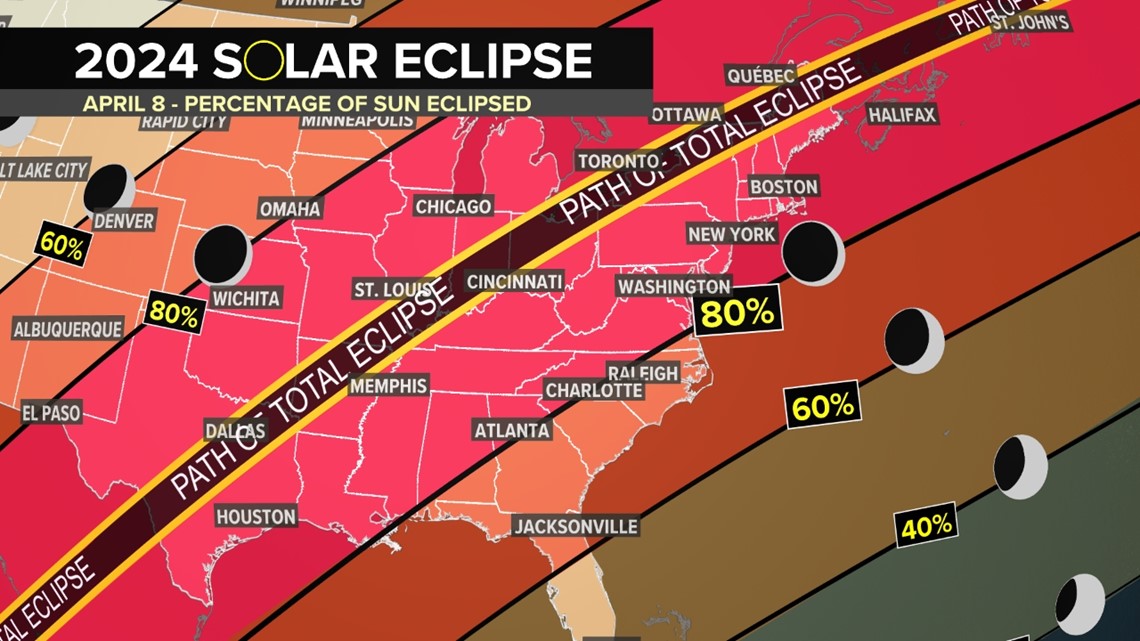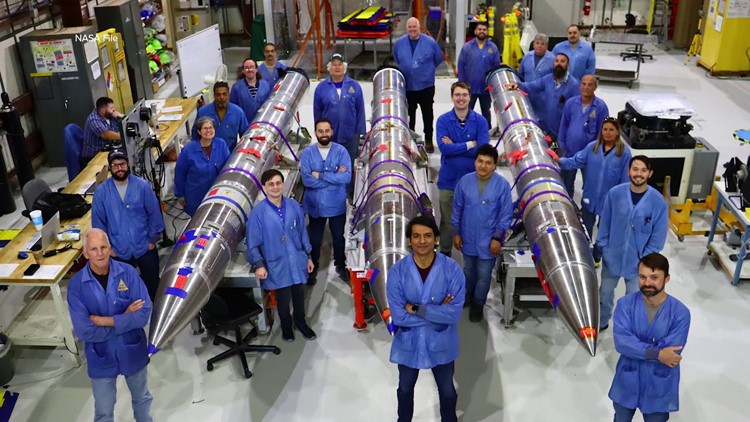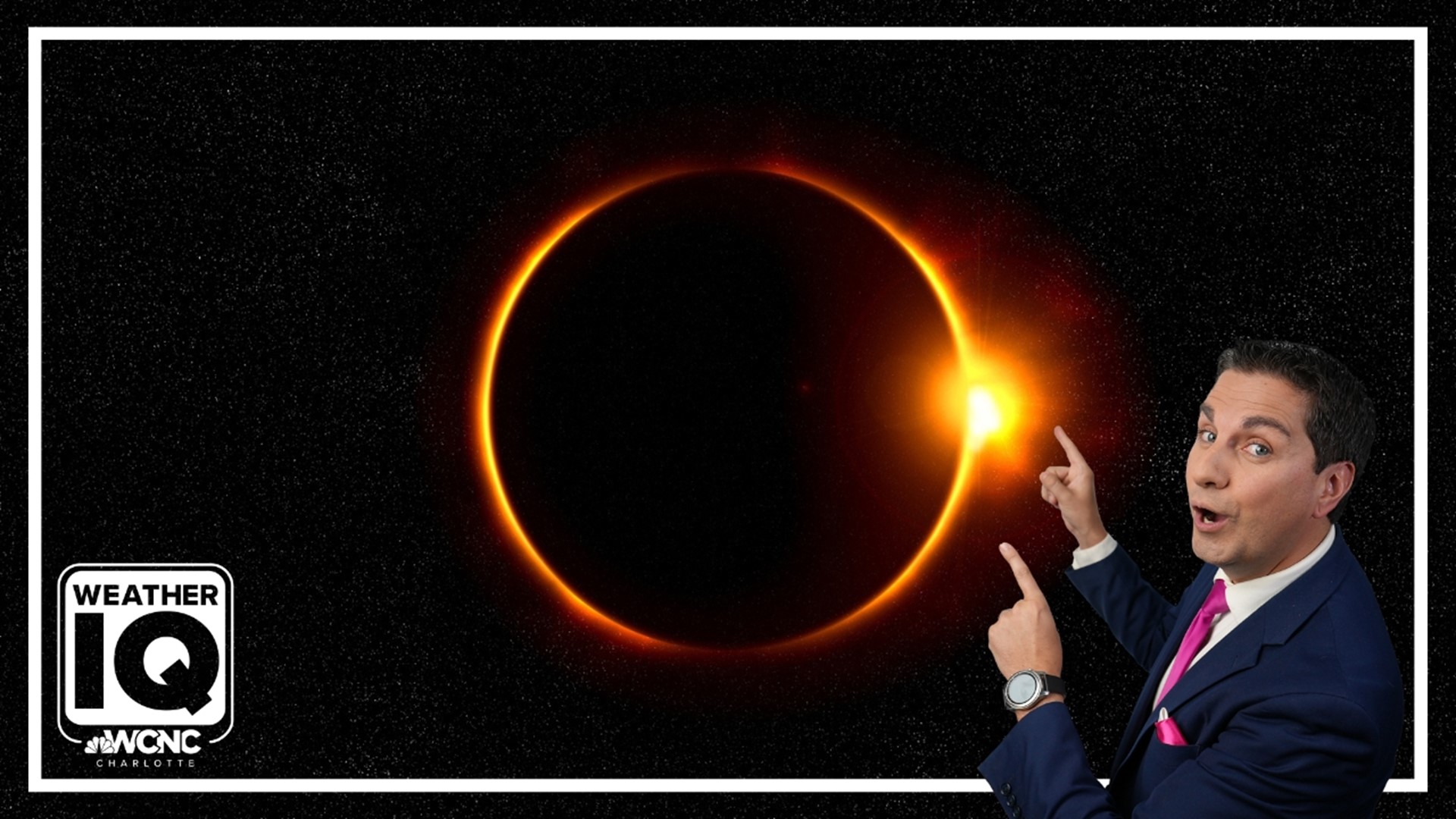WALLOPS ISLAND, Va. — Scientists will have only mere minutes during Monday's solar eclipse to gather as much data as possible about the sun and its impact on Earth's atmosphere.
"From a scientific perspective, there's a lot of influence the sun puts on Earth and a lot of different ways we feel it here at the surface but also in the super atmosphere," Jamie Favors, NASA's director of its Space Weather Program, explained.
Sounding rockets
Scientists will launch three sounding rockets during the total solar eclipse on April 8. They will launch from NASA's Wallops Flight Facility in coastal Virginia.
The rockets will collect data to help scientists study how Earth's upper atmosphere is affected when sunlight momentarily dims. Specifically, scientists want to better understand disturbances in the ionosphere created by the sudden change in solar radiation levels.
The ionosphere is a layer in Earth's upper atmosphere between 55 and 310 miles above the ground, according to NASA. It acts as the boundary between Earth's lower atmosphere and space.
“Understanding the ionosphere and developing models to help us predict disturbances is crucial to making sure our increasingly communication-dependent world operates smoothly," Aroh Barjatya, a professor of engineering physics at Embry-Riddle Aeronautical University in Florida, explains on the NASA website.
The knowledge gained will help scientists build better resiliency against communication interference, which can occur in the ionosphere and affect radio signals and GPS navigation. Scientists already know that sunlight electrically charges particles in the ionosphere. However, they also know that weather can also impact the charge of the ionosphere. They are looking for ways to better predict when those particle changes could interfere with communications.
To get a clear comparison of the ionosphere before, during and after the eclipse, scientists will launch three rockets: one 45 minutes before the eclipse, one during the eclipse, and another 45 minutes after the peak eclipse.
Those along the East Coast of the United States from New York through North Carolina may have a chance to spot the rocket launches in the sky.
Flying through the eclipse
NASA will also fly a jet plane to capture data along the path of solar eclipse totality
NASA's WB-57 plane will launch from NASA's Johnson Space Center in Houston and travel 460 mph through the path of totality.
"It does that so that we can actually extend the length of those experiments in totality," Gina DiBraccio, the deputy director of Heliophysics at NASA's Goodard Space Flight Center, explained.


Traveling this path at this speed will allow NASA to gather more data because the eclipse will last 25% longer for the plane.
"You would think that it would extend a lot longer. It's actually only maybe two minutes or so," DiBraccio explained.
Every second counts for scientists trying to observe this rare event.
On the ground, totality will only last approximately four minutes. In the air, scientists hope to extend their totality by 25%.
WCNC Charlotte’s Weather IQ YouTube channel gives detailed explainers from the WCNC Charlotte weather meteorologists to help you learn and understand weather, climate and science. Watch previous stories where you can raise your Weather IQ in the YouTube playlist below and subscribe to get updated when new videos are uploaded.



